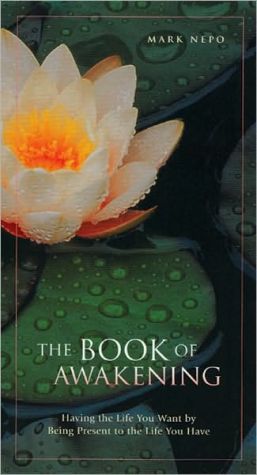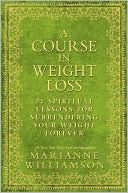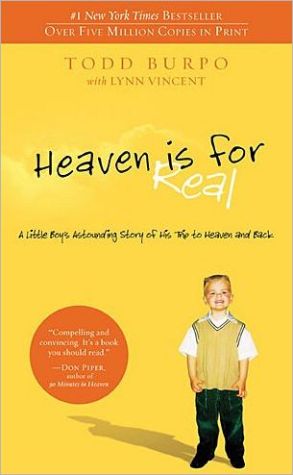Catastrophobia
“Compulsivo, convincente y autoritario. Una importante adición a nuestro entendimiento de aniguas catástrofes y su impacto en la consciencia humana. Esencial lectura para el prehitoriador altrnativo.”\ ANDREW COLLINS, autor de Gateway to Atlantis and From the Ashes of Angels (La Entrada a la Atlántida y De las Cenizas de los Ángeles)\ “Amplía la mente, provocativo.”\ Matthew Fox, autor de Original Blessing (Bendición Original)\ En Catastrofobia, Barbara Hand Clow, autora de libros de gran...
Search in google:
"Compulsivo, convincente y autoritario. Una importante adición a nuestro entendimiento de aniguas catástrofes y su impacto en la consciencia humana. Esencial lectura para el prehitoriador altrnativo". ANDREW COLLINS, autor de Gateway to Atlantis and From the Ashes of Angels (La Entrada a la Atlántida y De las Cenizas de los Ángeles)"Amplía la mente, provocativo". Matthew Fox, autor de Original Blessing (Bendición Original)En Catastrofobia, Barbara Hand Clow, autora de libros de gran éxito, examina legendarios cataclismos y muestra como, contrario a muchas profecías de fatalidades, de hecho estamos en la cúspide de una era de increíble crecimiento creativo. El reciente descubrimiento de los vestigios de arcaicos pueblos enterrados bajo el Mar Negro, es la más última instancia de evidencia en ascenso de que muchas de "miticas" catástrofes de la historia--la caída de la Atlántida, el Diluvio Bíblico--fueron eventos reales. Barbara Hand Clow muestra que una serie de desatres cataclísmicos, causados por una masiva alteración en la corteza terrestre de hace 11,500 años, estremeció al mundo y dejó la psique humana colectiva profundamente cicatrizada. Somos una especie herida y este miedo sin procesar, que pasó de generación, es responsable de nuestreas constantes expectativas de la apocalipsis, del Y2K al famoso final del calendario Maya en el 2012. Catastrofobia revela las insidiosas fuerzas globales,que han usado estos miedos colectivos para controlar a la humanidad por miles de años. Pero estamos a la mitad de un tremendo cambio en el ciclo precesional de la Tierra de 26,000 años y existe toda la indicación de que los cambios en la consciencia durante los últimos treinta años son los comienzos de una colectiva curación de estos profundos miedos, presagiando que un tiempo de extraordinaria actividad creativa está al alcance de la mano.BARBARA HAND CLOW es la autora de libros de gran éxito como Pleiadian Agenda, Liquid Light of Sex y Chirón: Rainbow Bridge Between the Inner and Outer Planets. Una internacionalmente afamada astróloga, editora y maestra de ceremonias de lugares sagrados, se presenta tallares alrededor del mundo y vive en la Nueva Inglarerra rural. Tiene una maestría en teología. Barbara Hand Clow is an internationally acclaimed ceremonial teacher, author, and Mayan Calendar researcher. Her other books include The Pleiadian Agenda, Alchemy of Nine Dimensions, Catastrophobia, and Liquid Light of Sex. She has taught at sacred sites throughout the world and maintains an astrological Web site, HandClow2012.com
\ The Embrace \ Alinganavichara Prakarana\ This part of the Kama Shastra deals with sexual union, and is called Chatushshashti, or sixty-four. Some authors say it is so titled because it contains sixty-four chapters. Followers of Babhravya say that this part contains eight subjects: the embrace; kissing; scratching with the nails or fingers; biting; lying down; making various sounds; purushayitam, or playing the part of a man; auparishtaka, or mouth congress. Each subject is of eight kinds, and since eight multiplied by eight is sixty-four, it is therefore named Chatushshashti.\ But Vatsyayana affirms that as this part also contains subjects such as striking, crying, the acts of a man during congress, the various kinds of congress and other subjects, the name sixty-four is only accidental. For instance, a tree is saptaparna, seven-leaved, or an offering of rice is panchavarna, five-coloured, but the tree does not have seven leaves, nor does rice have five colours.\ Kind of Embraces\ Babhravya refers to eight different kinds of embraces:\ The embrace which indicates the mutual love of a man and woman who have come together is of four varieties, and the action is denoted by the word which describes it.\ If a man under some pretext goes in front of or alongside a woman and touches her body with his own, this is called the touching embrace.\ If a woman in a private place bends down as if to pick up something, and presses her breasts against a man sitting or standing, and the man takes hold of them, this is called a piercing embrace.\ These two kinds of embraces take place only between persons who have not, as yet, started speaking freely to each other.\ When two lovers are walking together slowly, either in the dark, or in a public or a lonely place, and rub their bodies against each other, this is referred to as a rubbing embrace.\ If on this occasion one of them presses the other's body forcibly against a wall or pillar, this is known as a pressing embrace.\ These two embraces are peculiar to those who know each other's intentions.\ Embraces on Meeting\ At the time of the meeting four kinds of embrace are used:\ When a woman clings to a man in the same manner as a creeper twines around a tree, pulls his head down to hers to kiss him and makes a slight purring sound, embraces him, and looks lovingly at him, this embrace is called twining of a creeper.\ When a woman places one of her feet on the foot of her lover, and the other on his thigh; passes one of her arms round his back, and the other on his shoulders; makes a slight sound of humming and cooing, and climbs up towards him to get a kiss, this embrace is likened to climbing a tree.\ These two kinds of embrace take place when the lover is standing.\ When lovers are on a bed, and embrace each other so closely that their arms and thighs are encircled by each other, and rub against them, this is called an embrace like a mixture of sesamum seed and rice.\ If a man and a woman are very much in love and embrace as if they are entering into each others bodies, either while the woman is sitting on the lap of the man, or in front of him, or on a bed, this is called an embrace like a mixture of milk and water.\ These two kinds of embraces take place at the time of sexual union.\ Embracing Specific Body Parts\ Suvarnanabha gives us four more ways of embracing particular parts of the body:\ When one of the two lovers presses one or both thighs of the other between his or her own forcibly, this is the embrace of thighs.\ If a man presses the jaghana, middle part of the woman's body, against his own, and mounts her to practice scratching with the nail or finger, or biting, or striking, or kissing, while the hair of the woman remains loose and flowing, this is referred to as the embrace of the jaghana.\ If a man places his breast between the nipples of a woman and squeezes them, this is called the embrace of the breasts.\ If either of the lovers touches the mouth, eyes and forehead of the other with his or her own, this is known as the embrace of the forehead.\ Some say that even massaging is a kind I embrace because it involves touching of bodies. But Vatsyayana thinks that as massaging is performed at a specific time and for a particular purpose and has a different character, it cannot be termed an embrace.\ Some shlokas further enlighten us on this:\ The whole subject of embracing is of such a nature that men who ask questions about it, or who hear about it, or who talk about it, acquire thereby a desire for enjoyment. Even those embraces that are not mentioned in the Kama Shastra should be practiced at the time of sexual enjoyment, if they are in any way conducive to the increase of love or passion. The rules of the Shastra apply as long as the passion of man is middling, but once the wheel of love is set in motion, there is then no Shastra an no order.
Catastrophobia: The Truth Behind Earth Changes List of Illustrations Acknowledgments Foreword by J. Bernard Delair Introduction 1. Seizing the Cycles of the Stars 2. The Great Cataclysm and the Fall 3. The Bicameral Brain & the Sphinx 4. The Story of the Prediluvial World 5. Geomancy & Primordial Memory 6. Catal Huyuk & Noah's Flood 7. The Fallen Angels & the Stones of Ica 8. The Stargate Conspiracy & the Kosmokrater 9. Goddess Alchemy & the Heliopolitan Mysteries Appendix A: Egyptian Time Line Appendix B: Earth Changes During the Holocene Epoch Appendix C: Holocene Chronological Highlights Appendix D: Reflections on Earth's Tilting Axis Notes Suggested Reading Bibliography Index
\ Nexus". . . An empowering, thought-provoking book."\ \ \ \ \ Dell Magazine"Catastrophobia shines with keen insights into the nature of consciousness and a credible account of humanity's spectacular yet hidden past."\ \ \ Matthew Fox"Mind-expanding, provocative."\ \ \ \ \ Branches of Light"Extensively annotated, and loaded with fascinating information, this book uplevels the Earth game a notch or three."\ \ \ \ \ Jane Lee"This well researched book with numerous illustrations offers a comprehensive and challenging account of the history of the world - its people and beliefs - and the coming age of light."\ \ \ \ \ Jaye C. Beldo"Barbara backs up her views with some very thorough and impressive research."\ \ \ \ \ Andrew Collins"Compulsive, compelling, and authoritative. An important addition to our understanding of ancient catastrophes and their impact on human consciousness. Essential reading for the alternative prehistorian."\ \ \ \ \ Maya Del Mar's Daykeeper Journal"This book is a gem, jam-packed with scientific information, spiritual interpretations, relevant hypotheses, human psychological development, [and] earth changes."\ \








